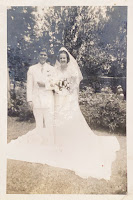An astute observer, by the way, as an aside, would notice that the stars are not truly fixed in the sky. Every atom in the universe, stars included, are moving outward at a quickening pace. Where's my astrophysicist when I need him?
And I don't recommend remaining unshaken in a storm. King Lear barely pulled it off on the heath and you're bound to get hit by a renegade umbrella to the head.
But, I digress. The sonnet reminds readers of everyone who has ever loved: Heloise and Abelard, among them. They never tasted physical love, but their eternal love lives on forever in their passionate letters.
I think of love that inhabits a lifespan. Love that lives on even after the first love.
I think of Cupid and Psyche: the marriage of Eros and Mind.
The poem is fresh in my memory for we did a close read of it on Friday last (N.B. I am a high school English teacher).
I like the sonnet's solution: it is a typical Shakespearean jest. I would rephrase it thus: if you can't agree with me on love, then I could never have written these words and this sonnet could never exist.
Sonnet CXVI (116) by William Shakespeare
Let me not to the marriage of true minds
Admit impediments. Love is not love
Which alters when it alteration finds,
Or bends with the remover to remove:
O no! it is an ever-fixed mark
That looks on tempests and is never shaken;
It is the star to every wandering bark,
Whose worth's unknown, although his height be taken.
Love's not Time's fool, though rosy lips and cheeks
Within his bending sickle's compass come:
Love alters not with his brief hours and weeks,
But bears it out even to the edge of doom.
If this be error and upon me proved,
I never writ, nor no man ever loved.
Let me not to the marriage of true minds
Admit impediments. Love is not love
Which alters when it alteration finds,
Or bends with the remover to remove:
O no! it is an ever-fixed mark
That looks on tempests and is never shaken;
It is the star to every wandering bark,
Whose worth's unknown, although his height be taken.
Love's not Time's fool, though rosy lips and cheeks
Within his bending sickle's compass come:
Love alters not with his brief hours and weeks,
But bears it out even to the edge of doom.
If this be error and upon me proved,
I never writ, nor no man ever loved.











